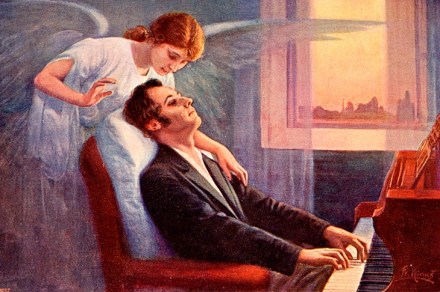It’s time to leave Chopin in peace
There’s a scene early on in A Song to Remember — Charles Vidor’s clunky Technicolor film of 1945 — in which the young Frédéric Chopin (Cornel Wilde) provides background music for a banquet hosted by Count Wyszynska in his Warsaw palace, plates of rubbery pig and candy-coloured vegetables in heady supply. Chopin plays his own Fantaisie-Impromptu, five years or so before composing it, and then, having insulted the Russian governor of Poland (‘I do not play for tsarist butchers!’), he avoids arrest by hastily rowing to Paris, so it seems, dressed like a military cadet. Our real-life hero has borne an awful lot since his premature death in 1849, though



